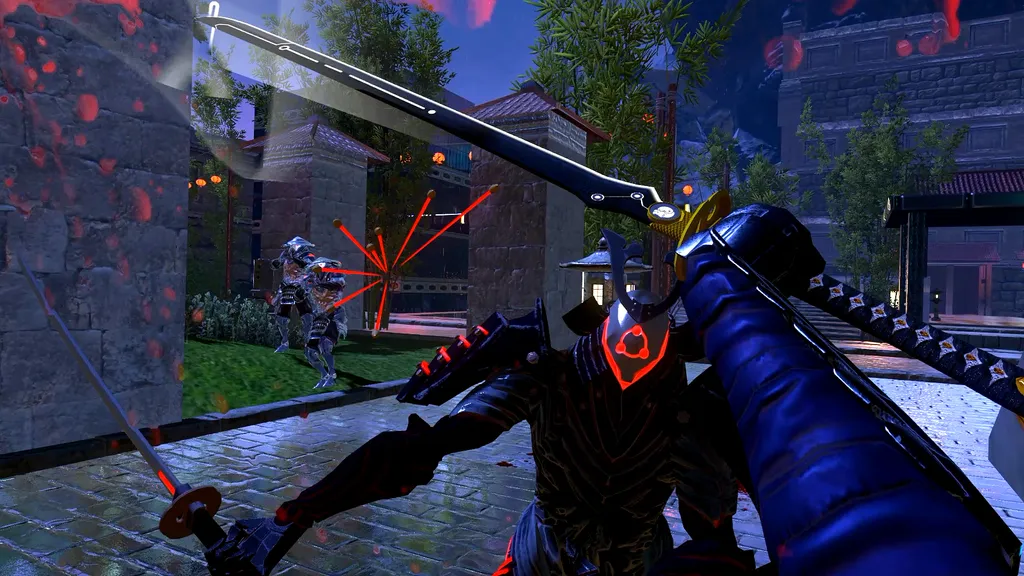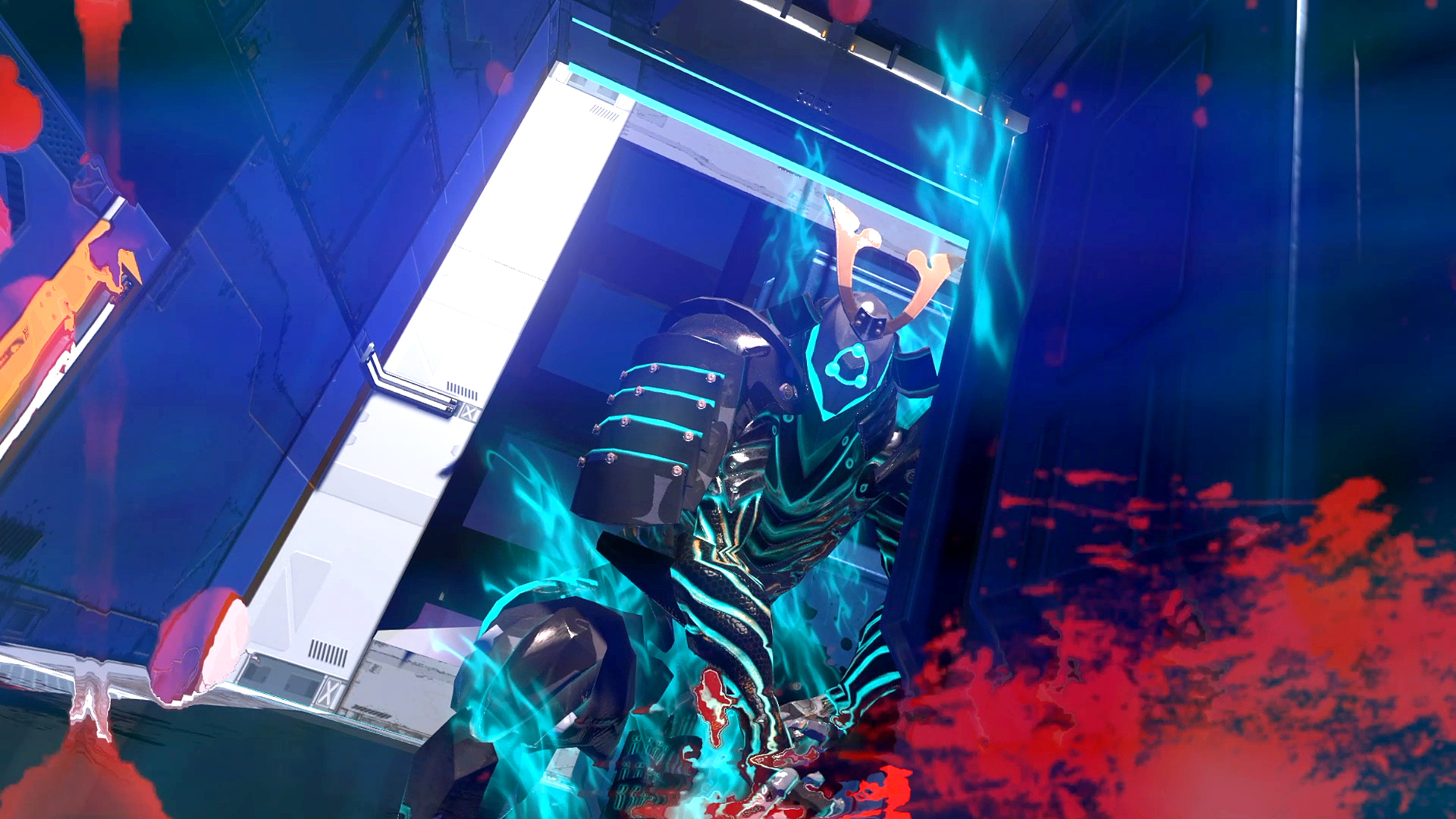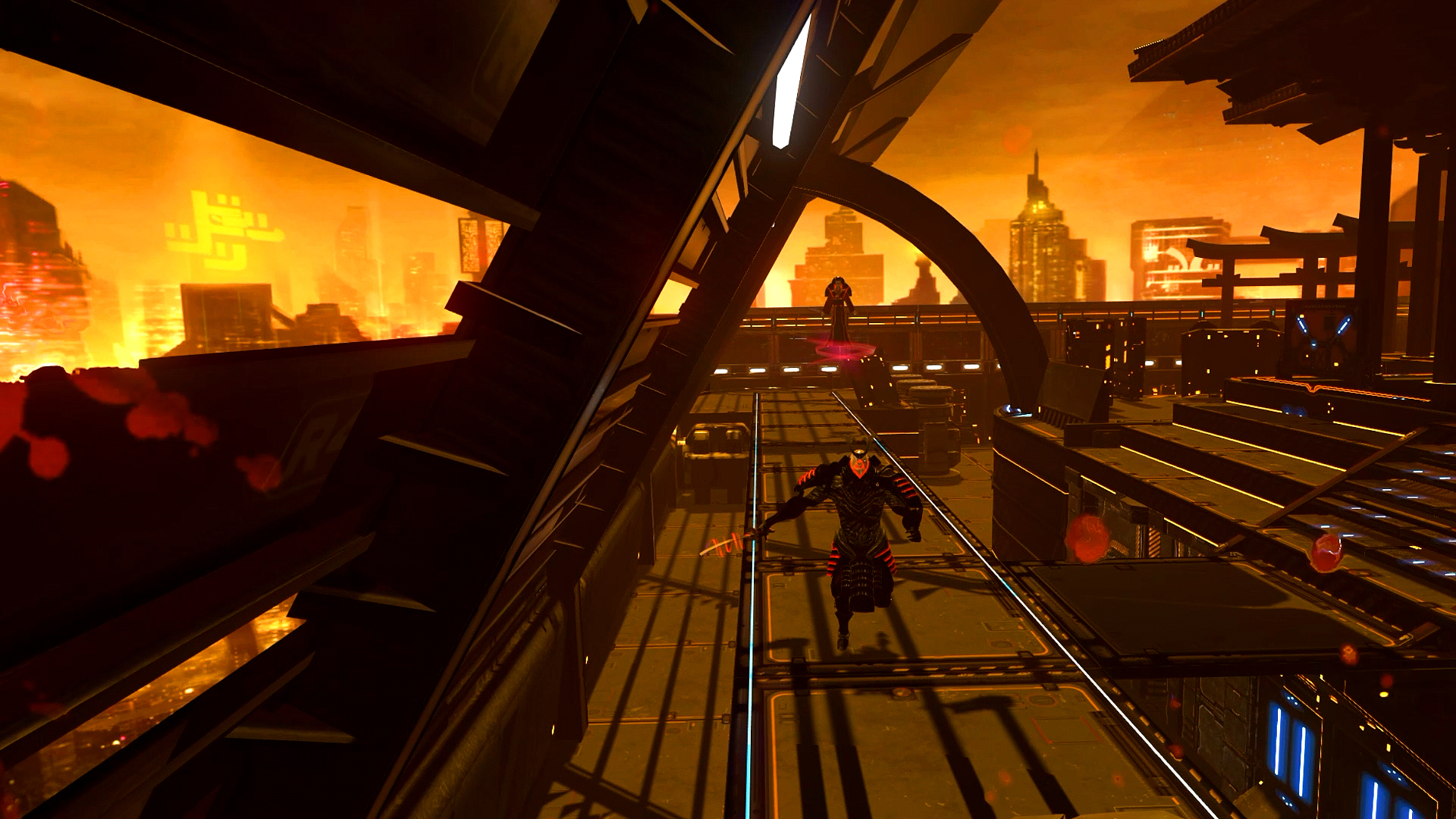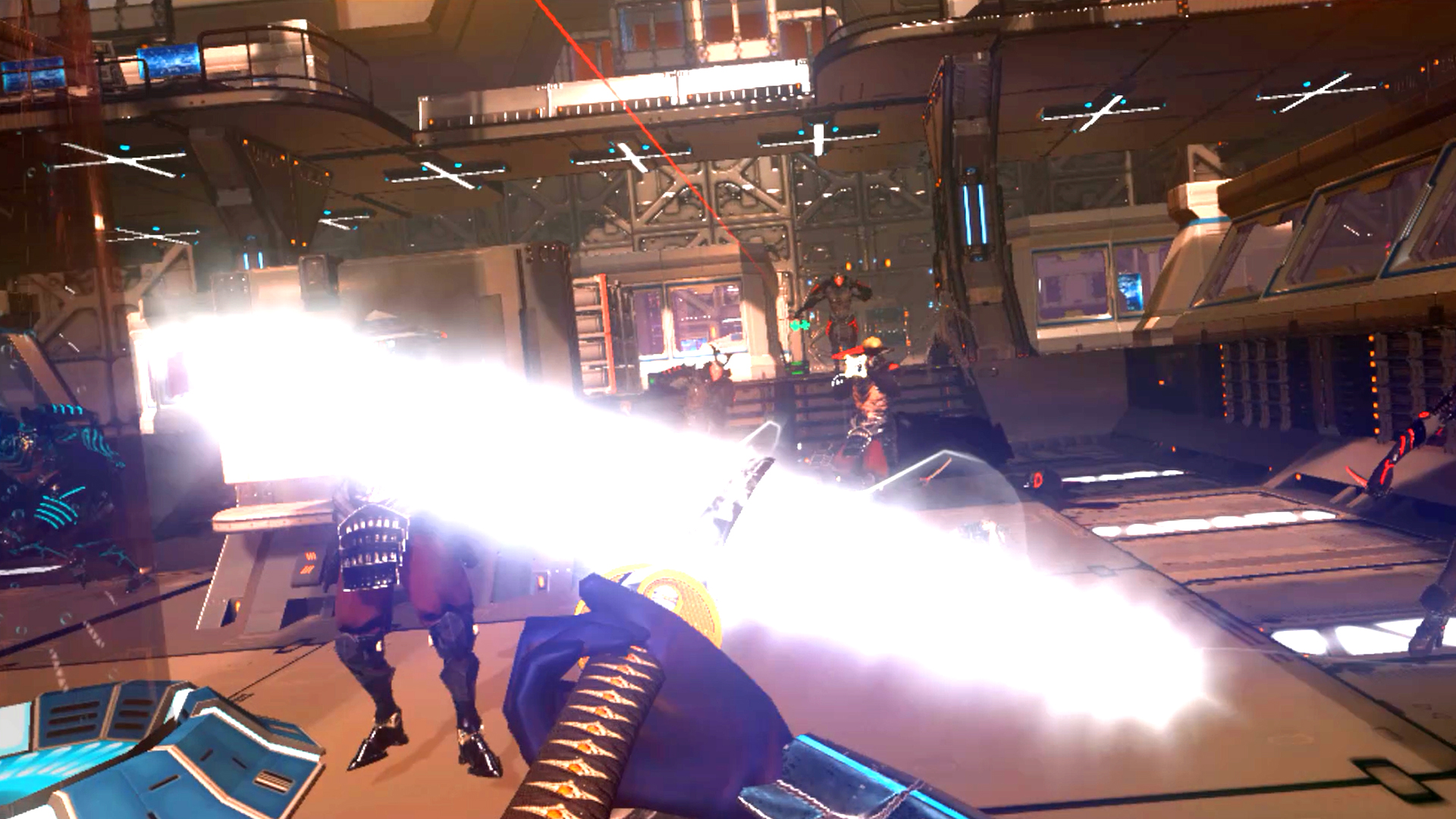The VR gaming market is still small enough and young enough that we have countless “firsts” left to discover. For example, everyone probably remembers the first zombie they killed in VR or the first time they were in a social experience and really felt like that was a real person in front of them.
Well now thanks to Sairento VR I will never forget the first time I jumped off the ground, ran along a wall, leaped off the wall, froze time in mid-air, sprayed bullets down below decapitating a robot ninja, and then landed on the ground, sliding in style, between another ninja’s legs as I sliced them in half while skidding by.
That’s one hell of a memorable thing to do in VR for the first time.
Fans of Survios’ Raw Data will very likely notice a lot of similarities here. It’s got a similar cyberpunk style with flashy action moments, swords, guns, and even time-slowing powers. However, the comparisons mostly end at a surface, mechanical level.
One of the most inventive things about Sairento VR, and something that will likely be contentious for a lot of people, is the movement system. Using your dominant hand you can point and press the thumbstick/trackpad to dash teleport across the ground or even leap through the air. Ground movement happens very quickly, but movement through the air is a bit slower and less weighted. It feels almost like the gravity was turned down, like a moon jump.
From the very start of the game you can double jump as well and push off of walls endlessly or run along runs just like out of a Matrix movie. Finally, if you jump and then crouch (as in physically bend your knees a bit) as you’re landing then your character slides across the level with satisfying speed. All of this adds up to establish Sairento as one of the most versatile VR games from a level traversal perspective. That being said, due to how the stutter-stepping nature of dash movement and leaping works it’s almost like you’re playing a game that’s constantly switching between fast-forwarding and pausing itself without ever just chugging along at a normal pace. There are moments of brilliance in the system, but more often than not it can cause confusion and a disjointed feeling.
Truthfully, combat is the real highlight of Sairento. In the first mission you’ll have your two trusty pistols at your side and two katanas at your back, but before long you’ll start to level up and unlock a whole host of weapons and upgrade slots. Everything from attack speed and cooldowns can be tweaked, or even gaining additional air jumps. Plus, each weapons has slots that can be upgraded with various enhancements you find out on missions. All of this is meaningless in the end though, as you’re granted a a wide range of choices that are never necessary or game-changing in the grand scheme of things. It’s depth for the sake of depth, but it has no meaning.
Sairento is a great example of a game that just wouldn’t work outside of VR at all. The closest example would be something like Shadow Warrior 2, but the gameplay is so different that it’s hard to even make the comparison.
Between the Campaign Mode, Arcade Mode, randomized missions, and Multiplayer there is a lot of stuff to do in Sairento VR. The Campaign is a bit brief and is over before it really feels completed, but it’s nice to have something that serves as sort of an elongated tutorial. When you first start up the game you can run it in Arcade mode as well, which is really just designed for actual Arcades to use, but would also make sense as an option if you’re demoing it to friends.
The semi-randomized missions pop up on a map with timers attached similar to how Payday 2 handles its mission map. This gives the game a more dynamic feeling to it rather than picking from a list of pre-made side missions. Many of these missions are much more difficult than the campaign, but gives a lot of variety to keep playing even after the main campaign is over.
After a few hours everything starts to bleed together in Sairento VR. Part of it has to do with the fact that you’re also dashing and jumping around levels so much that you never really appreciate anything around you, but it’s also due to the general lack of real variety. Most levels feel about the same and the majority of enemies just bull rush you either with guns or swords. It’s effective and lends plenty of excitement, but it’s far from intelligent enemy design in most cases.
Multiplayer runs well, but there just aren’t a lot of people online yet since Sairento just launched. Facing off against enemy players that have the same fast-paced movement skills as you really underscores how deliciously overpowered the player is against the AI enemies.
Sairento VR is a game with a ton of stuff to do and some really fun core gameplay elements, but it just doesn’t feel like it all comes together well in the end. There’s a lack of meaningful depth, some glaring repetition, and a general lack of polish that holds this action-packed romp from truly achieving VR greatness.
Sairento VR is available for Rift on Oculus Home and Steam for both Rift and Vive. A PSVR release is planned for later this year. Read our Game Review Guidelines for more information on how we arrived at this score.



























